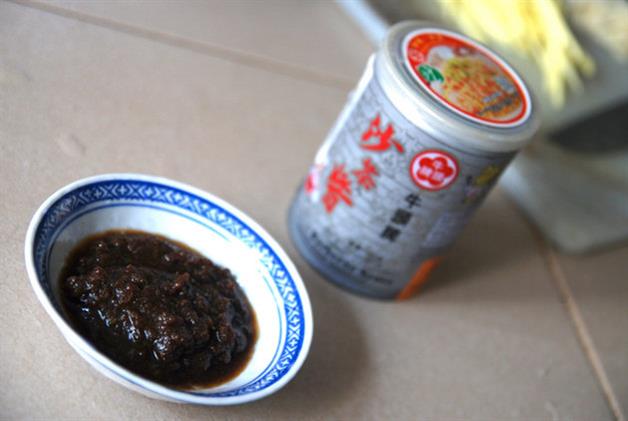
What is Teochew Satay Sauce?
By Sheere Ng - Wednesday, Mar 06, 2013
沙茶酱(pronounced as sha cha jiang) is a robust dipping sauce literally translated as “sand tea sauce”. This sauce crept into our culinary repertoireover four decades ago, more regularly with steamboat.
Sha cha is also known as沙爹 (pronounced as sha die) in Hokkien. It is no coincidence that “sha die” is also how the southeast Asian Chinese refers to the Malay’s barbecued meat skewer, satay. They are in fact the same thing, or to be more accurate, one is a derivation of the other.
The Chinese Teochew and Hokkien diaspora picked up satay-making skills when they were seeking work opportunities Nanyang (what southeast Asia was known as) and especially in Indonesia. When they return to their hometown in the coastal region in south China,namely Fujian and Guangdong provinces, they modified the sauce and created dishes with it that suit the local palate.
It was not known when sha cha first appeared in China, but according a Taiwanese newspaper, the sauce travelled from Shantou, Guangdong to Taiwan, just 200 over miles across the Taiwan Strait, at least 60 years ago. In Shantou, sha cha steamboat is a signature dish, and so it is in Taiwan today. An old hawker selling sha cha beef noodle in Shantou (in Chaozhou) also shared with us that this dish appeared back in the 50s.
There are at least three versions of sha cha sauce. The Guangdong version, which includes ingredients like peanuts, garlic, tau cheo, five spice powder, cumin powder, dried shrimps, lemongrass, coconut milk and chilli oil, just to name some, has a more robust flavour than those from Fujian, although made of similar ingredients.
But among avid cooks and chefs, the unspoken consensus is that the best ready-made sha cha sauce comes from Taiwan, specifically the bull head brand. The founder was a former Kuomintang soldier from Chaozhou who fled to Taiwan after the political party was defeated in the civil war. After leaving the army, he made his own sha cha sauce and consigned it to provision shops. Its popularity grew and became a sought after brand among restaurants.
Since the 70s, sha cha appeared intermittently at Singapore steamboat restaurants as a stock (think soupy satay celup) or dip. One of them was Tianfu Hong Kong Style Steamboat. In the last two years, more steamboat establishments began to offer sha cha, but only as a dip. The biggest difference between sha cha and satay sauce is that the former is fragrant and savoury, but not spicy, says Mr Tan Teng Liang, founder of Tianfu.
This migration (from southeast Asia to China) and remigration (from China to Taiwan and back to southeast Asia) is known as “reterritorialisation”. According to the book Chinese Food and Foodways in Southeast Asia and Beyond, this double migration is also common among Chinese foods that first travel to southeast Asia and from there to the other parts of the world due to cross-cultural interaction.
Besides steamboat, sha cha also makes a perfect condiment for stir-fry meats, specially the gamey beef and mutton. Various versions of it can be found in Taiwan’s night markets, such as the famous Shihlin. But if it’s too costly a trip to make, here is a simple recipe that you can do at home.



